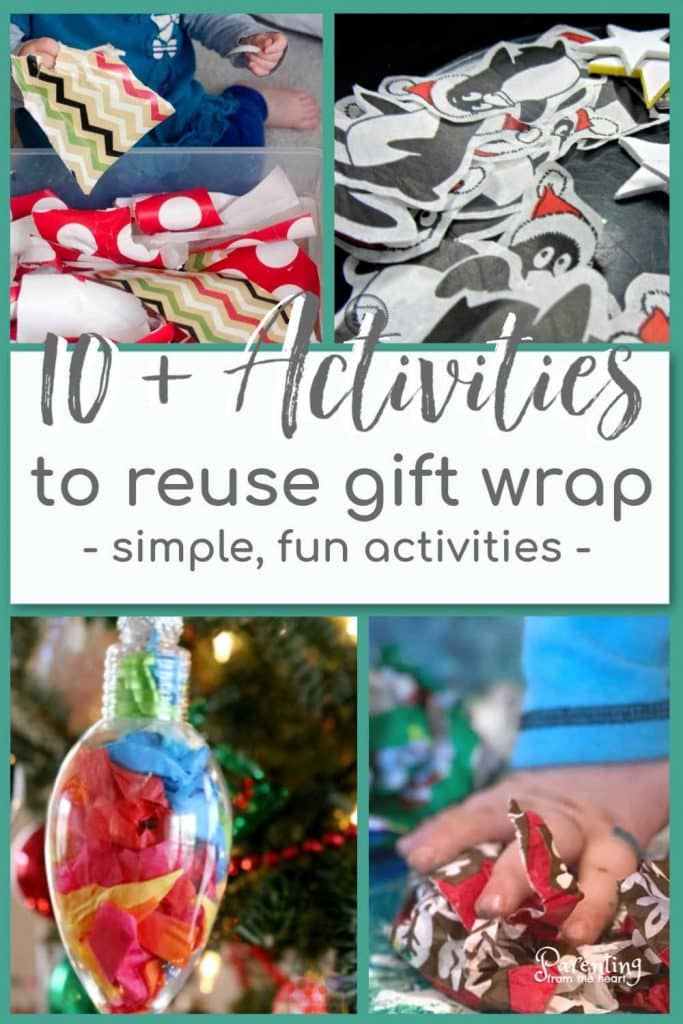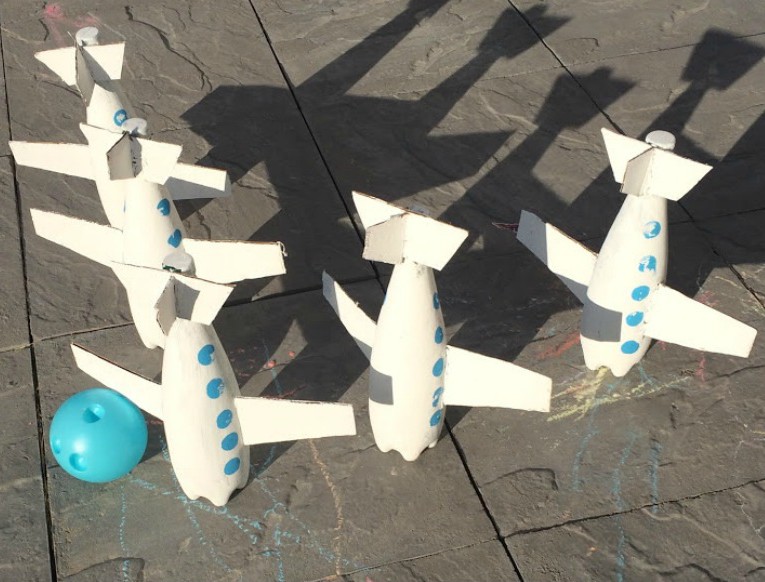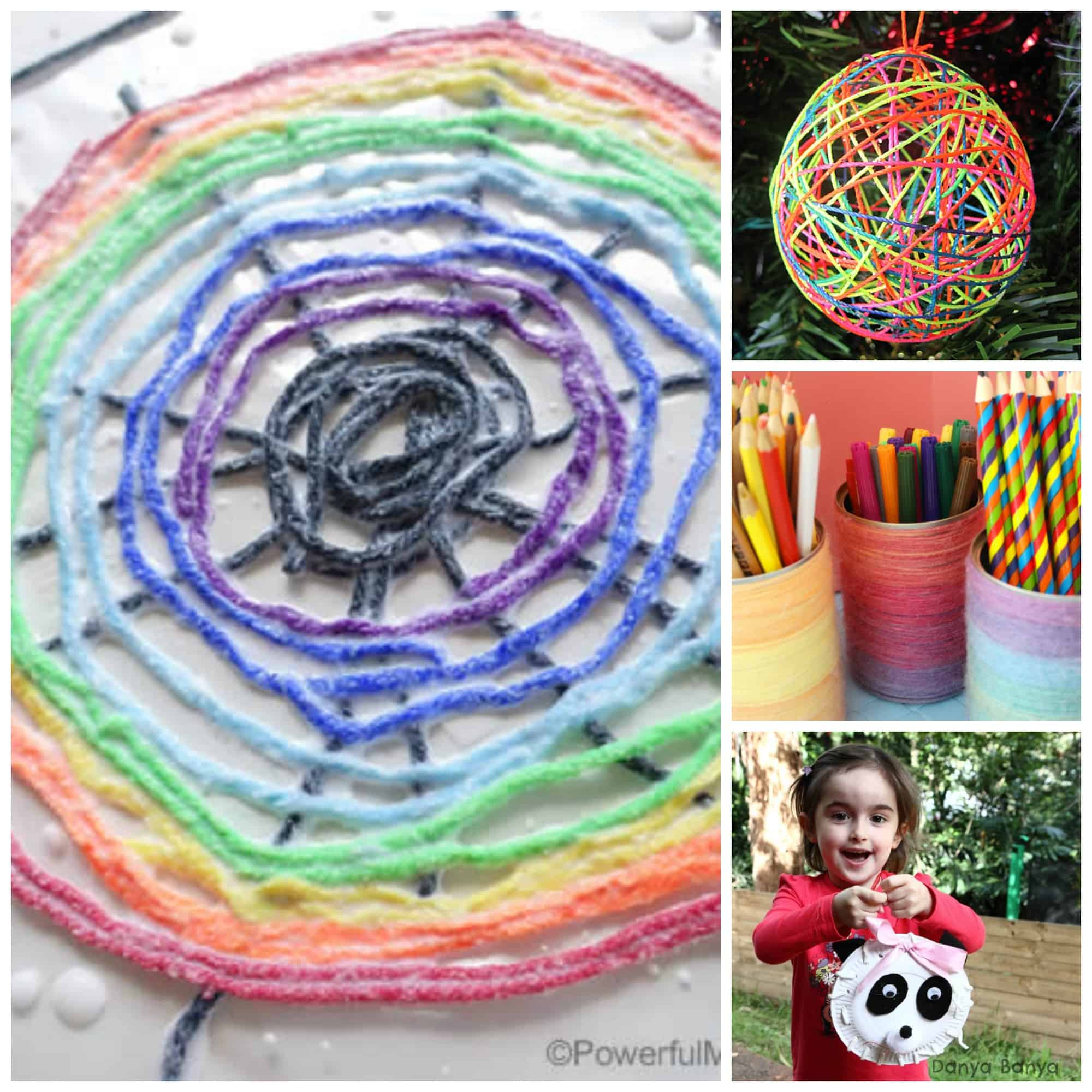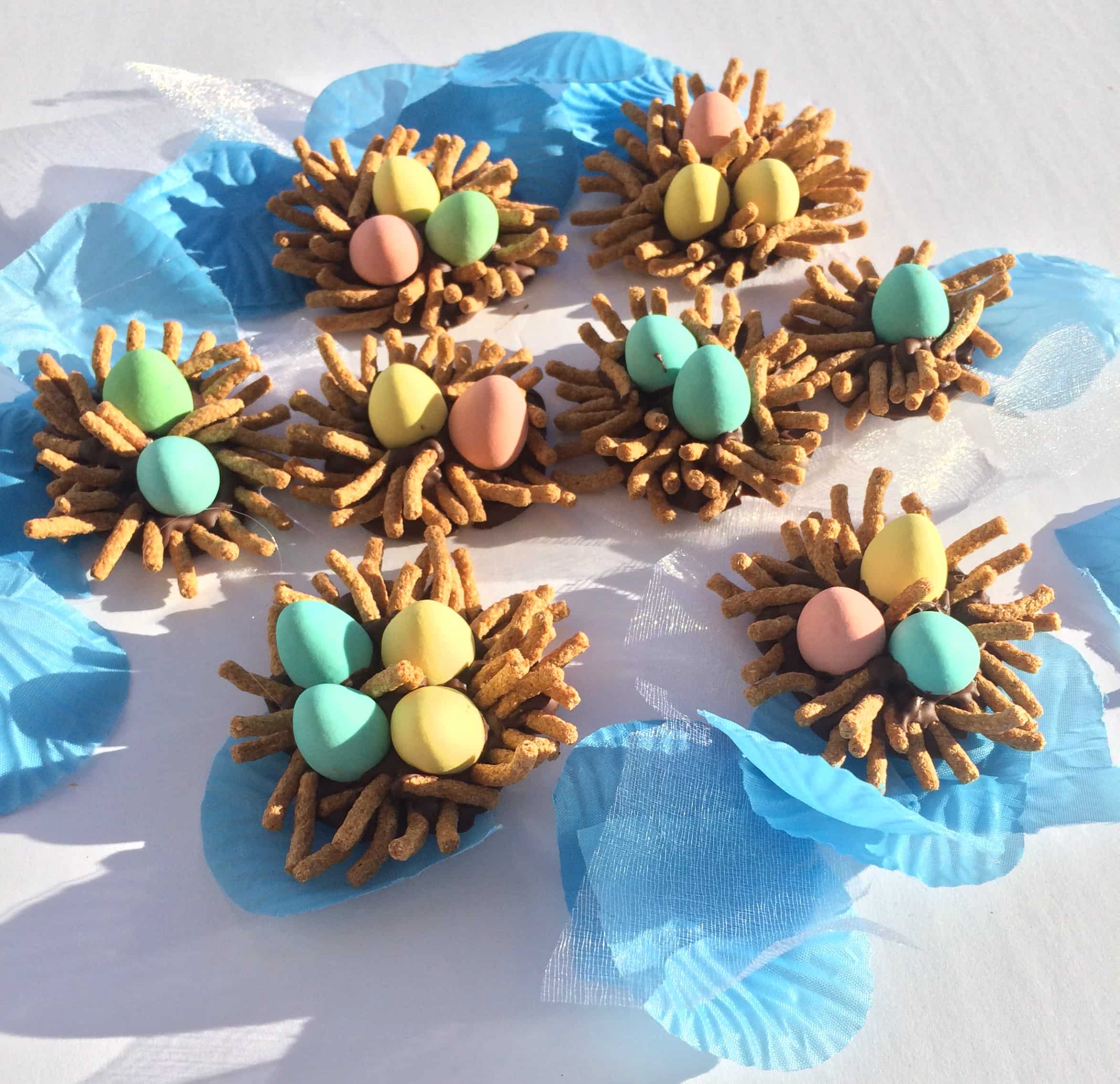After Christmas or Birthdays, there is SO much wrapping paper! Find fun simple kids activities to engage in process art, fine motor activities and make decorations.
We’ve already started opening Christmas gifts in waves. Because our family lives far away, presents have slowly arrived. It’s been great. Some of our loved ones have asked that they open their gifts immediately. That way the kids can enjoy the gifts before getting inundated Christmas morning. ALREADY I’m overwhelmed with the wrapping paper. While I love the tradition of wrapping and unwrapping, I don’t like the waste. Of course, I do try and re-use what I can for future presents. But gift wrap is so pretty. I wanted to find ways we could reuse wrapping paper for fun activities with my kids! I had only one idea so I asked other bloggers for their best ideas to recycle and reuse wrapping paper! Here they are.
Recycle and Reuse Wrapping Paper Ideas: Perfect for after a birthday or Christmas!

Use recyled tissue to make Fine Motor Flowers // Parenting from the Heart
Set up a pretend Gift Wrapping Station // Views from a Step Stool
Use recycled tissue or wrapping paper to Make Ornaments // Teaching Two & Three Year Olds
Make Tie Dyed Gift Wrap (using tissue paper) // Mum in the Mad House
Paint with Leftover Wrapping Paper // Views from a Step Stool
Practice Scissor Skills (by cutting out upcycled wrapping paper) // Sugar Aunts
Create Tissue Paper Process Art // Kids Craft Room
Make a Tissue Paper Glider // Sugar Aunts
Fill Ornaments with Tissue Paper // School Time Snippets
Create Tissue Snowdrop Flowers // Kids Craft Room
Set up a Ripping Station for Fine Motor Practice // Busy Toddler
Paste Tissue to Make a Reusable Calendar // Sugar Aunts

I hope you have fun with these ideas to recycle and reuse wrapping paper! I’m looking forward to trying them all with my kids.












Such fun and creative ways to use wrapping paper! The tissue paper snowdrop flowers are beautiful.